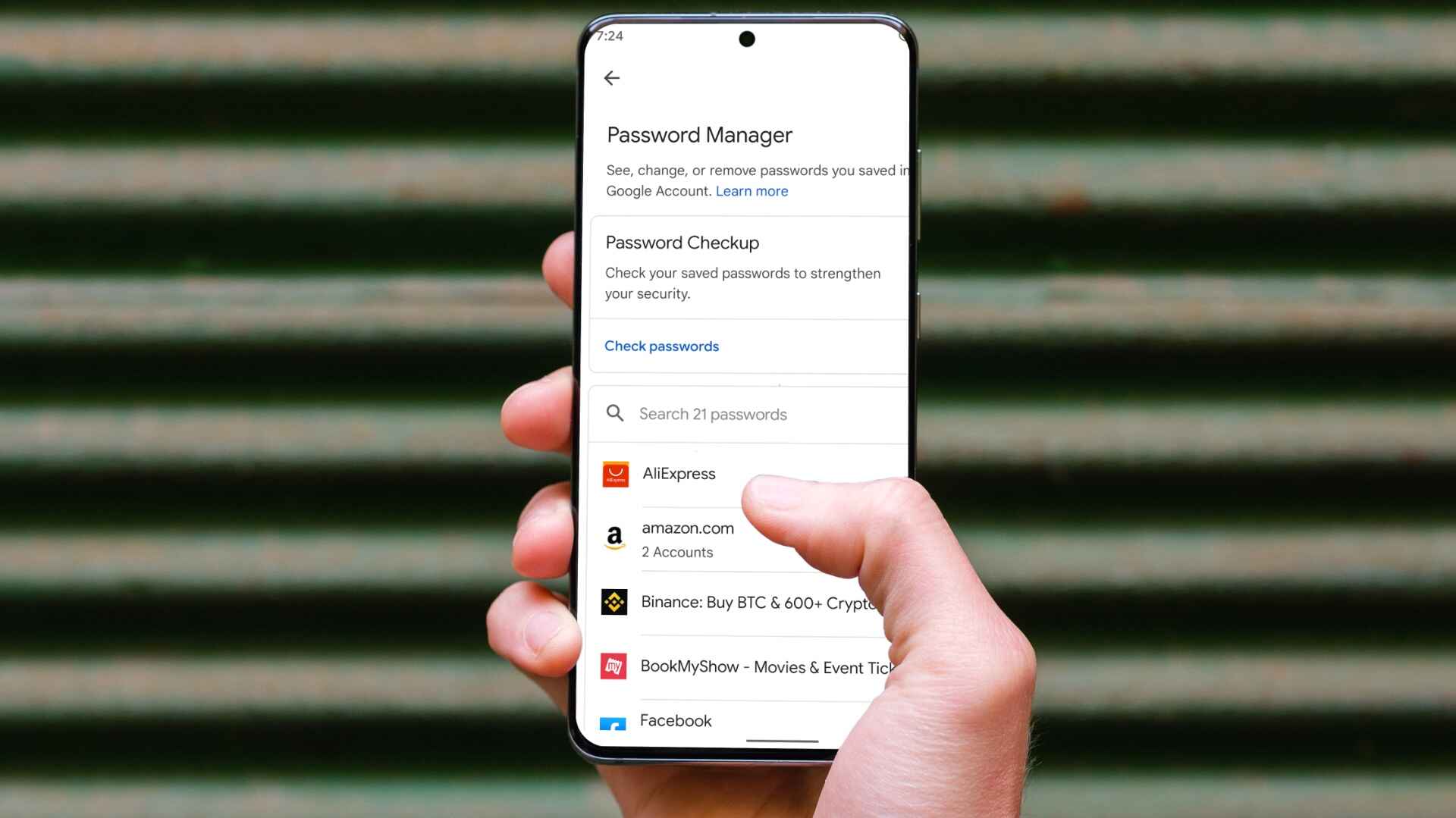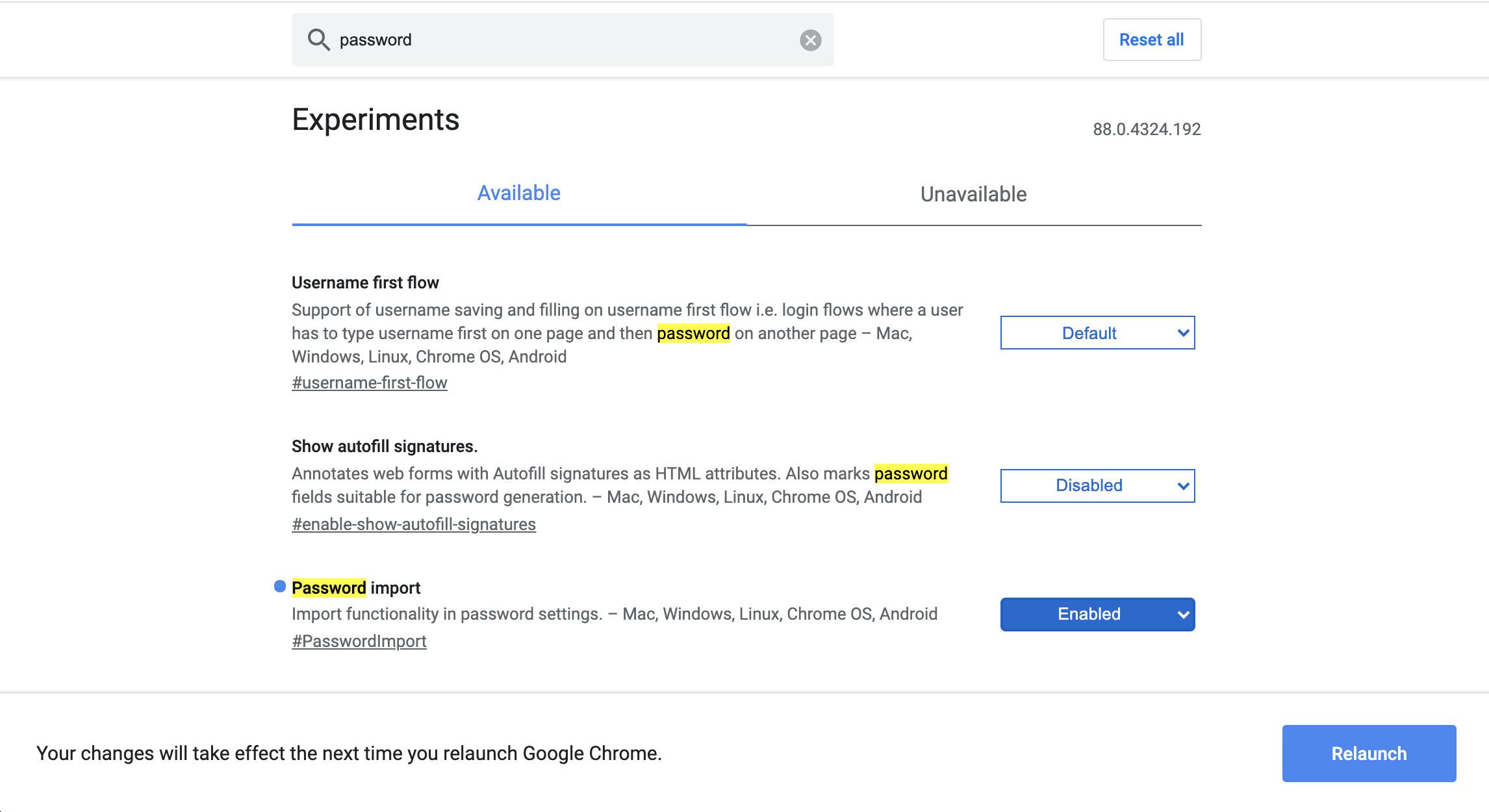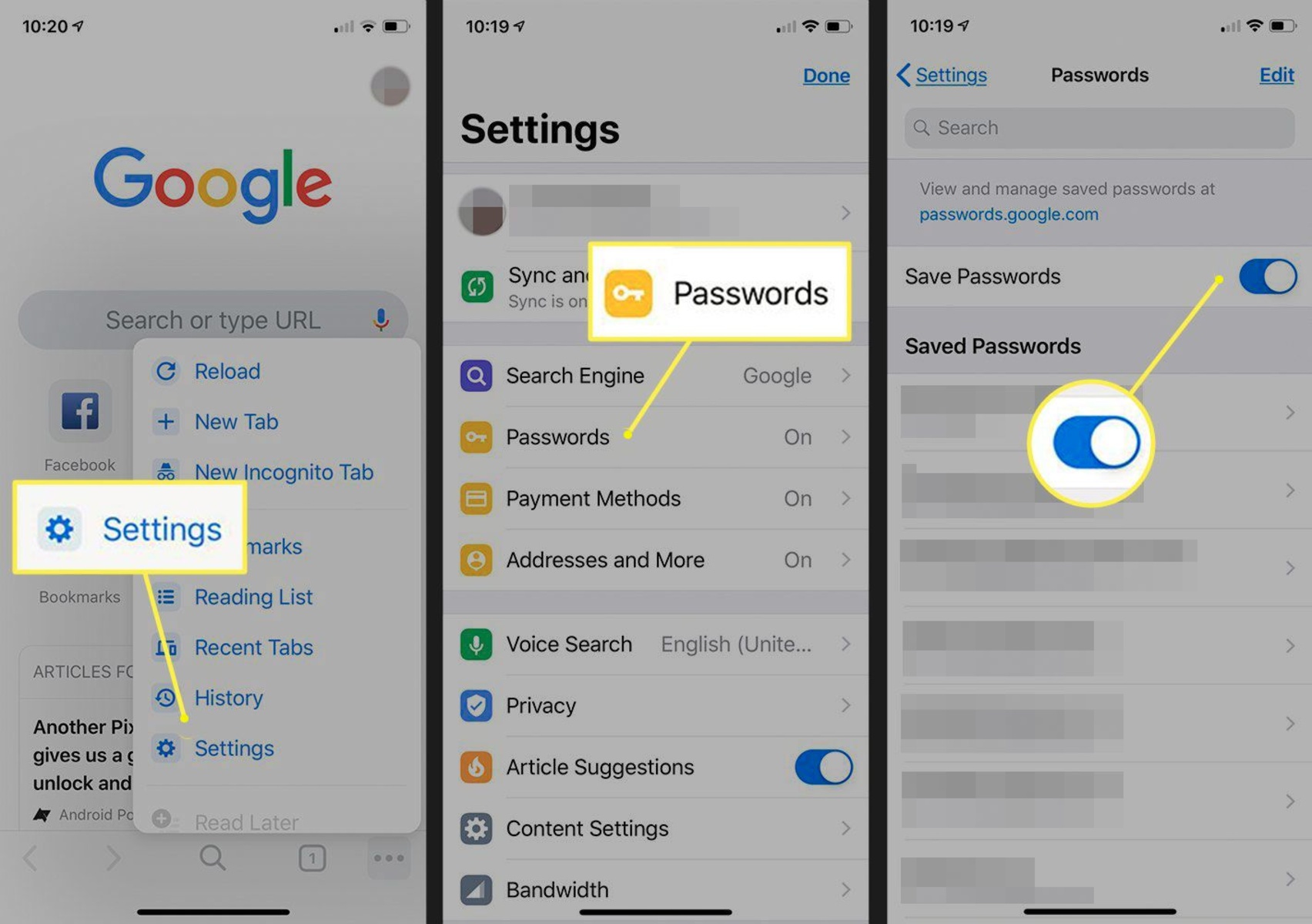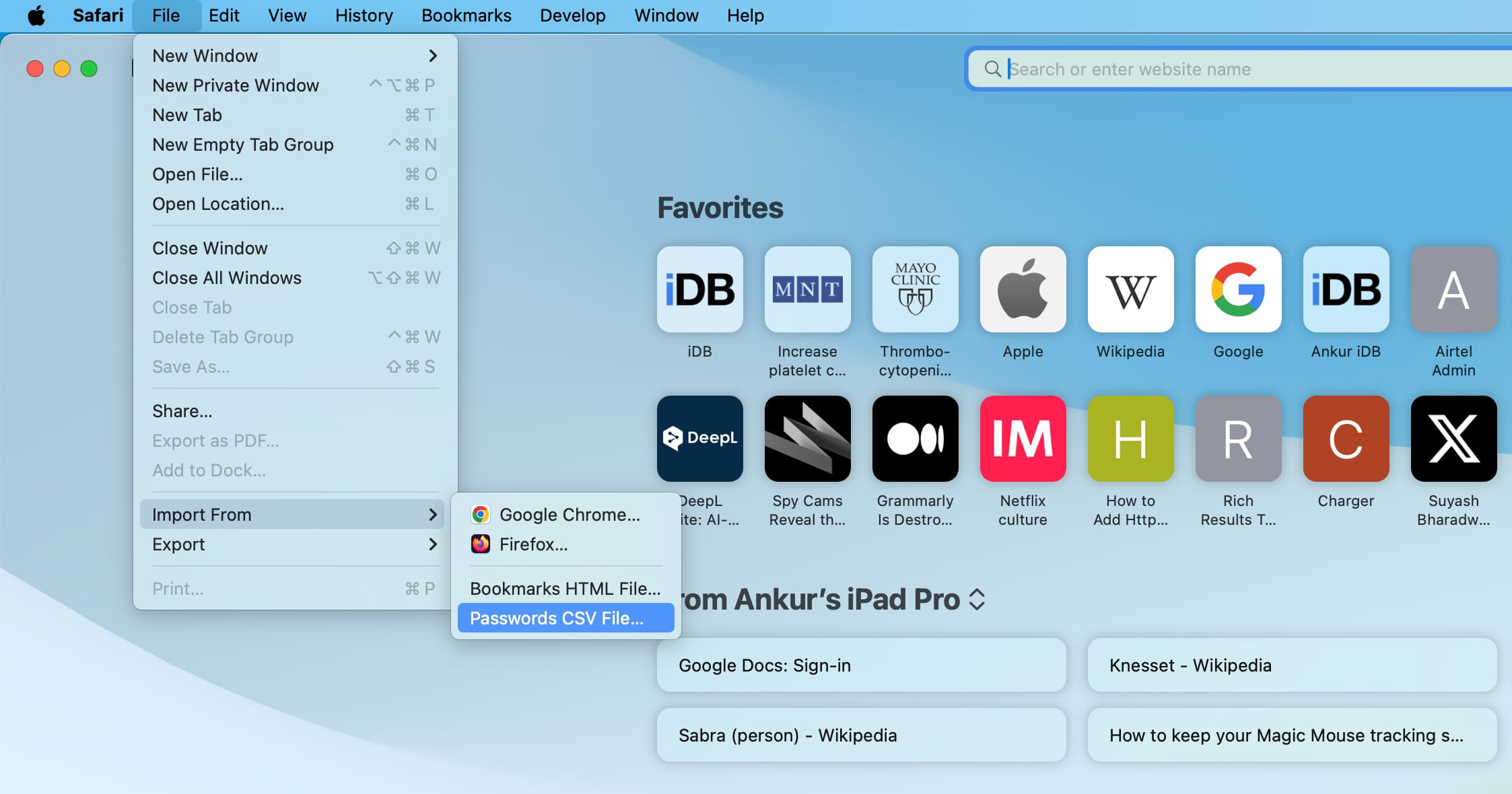Introduction
Have you ever experienced the frustration of having to repeatedly enter your password every time you visit a website on Google Chrome? It's a common annoyance that many of us encounter, but fear not – there's a simple solution. By manually saving your password in Chrome, you can streamline your browsing experience and eliminate the hassle of constantly re-entering your credentials.
In this guide, we'll walk you through the process of manually saving a password in Chrome, empowering you to take control of your browsing convenience. Whether you're tired of typing in your login details for your favorite websites or simply seeking a more efficient way to manage your passwords, this step-by-step tutorial will equip you with the knowledge and skills to make your online interactions smoother and more seamless.
So, if you're ready to bid farewell to the inconvenience of repeatedly entering your passwords, let's dive into the world of Chrome settings and discover how to save your passwords manually. With just a few simple steps, you'll be able to enjoy the convenience of automatic login, making your browsing experience more efficient and enjoyable. Let's get started!
Step 1: Open Chrome Settings
To begin the process of manually saving a password in Chrome, the first step is to access the Chrome Settings. This can be easily achieved by clicking on the three vertical dots located in the top-right corner of the browser window. Once you click on these dots, a dropdown menu will appear, presenting you with a range of options to choose from. Among these options, you will find "Settings," which is the gateway to customizing and managing various aspects of your Chrome browsing experience.
Upon selecting "Settings," a new tab will open, displaying a plethora of configuration options and features that allow you to personalize your Chrome browser according to your preferences. From basic settings such as appearance and language to advanced options like privacy and security, the Settings page serves as the control center for tailoring your browsing environment to suit your needs.
Within the Settings page, you will find a navigation panel on the left-hand side, offering a convenient way to navigate through the different sections and options available. This intuitive layout makes it easy to locate the specific settings you wish to modify, ensuring a user-friendly and efficient experience.
In addition to the navigation panel, the Settings page also provides a search bar at the top, enabling you to quickly locate specific settings by entering relevant keywords or phrases. This feature is particularly useful for users who prefer a direct and expedited approach to accessing the desired settings without having to manually navigate through the various sections.
By opening the Chrome Settings and familiarizing yourself with the layout and navigation options, you are taking the crucial first step towards enhancing your browsing convenience. The ability to access and customize the settings empowers you to optimize your browsing experience, setting the stage for the subsequent steps in the process of manually saving your password in Chrome.
With the Chrome Settings now at your fingertips, you are well-equipped to proceed to the next step and delve into the process of managing and saving your passwords manually, unlocking a new level of convenience and efficiency in your online interactions.
Step 2: Manage Passwords
Upon accessing the Chrome Settings, you will find a range of options to customize and manage your browsing experience. One of the key features within the Settings page is the ability to manage your saved passwords. This functionality empowers you to view, edit, and organize the passwords associated with your various online accounts, providing a centralized hub for password management within the Chrome browser.
To access the password management feature, navigate to the "Autofill" section within the Settings page. Here, you will find the "Passwords" option, which serves as the gateway to managing your saved login credentials. By clicking on the "Passwords" option, you will be presented with a list of websites for which Chrome has saved your passwords. This comprehensive overview allows you to easily identify and access the stored passwords associated with your online accounts.
Within the password management interface, you have the flexibility to perform various actions, including viewing saved passwords, deleting outdated credentials, and updating login information for specific websites. This level of control and visibility ensures that you can effectively organize and maintain your passwords, promoting a secure and streamlined browsing experience.
In addition to managing individual passwords, Chrome also offers the option to export and import saved passwords. This functionality is particularly useful for users who wish to transfer their saved passwords to another device or browser, facilitating a seamless transition and ensuring consistent access to their login credentials across different platforms.
Furthermore, Chrome provides the option to generate secure passwords for new accounts, enhancing your online security by creating strong and unique passwords for each website or service. This proactive approach to password management aligns with best practices for maintaining a robust security posture in the digital realm.
By delving into the password management capabilities within Chrome, you are taking proactive steps to organize and safeguard your online credentials. This foundational aspect of password management sets the stage for the subsequent step of manually saving a password in Chrome, as you gain a comprehensive understanding of how to navigate and leverage the password management features to optimize your browsing convenience and security.
Step 3: Save Password Manually
Now that you have familiarized yourself with the password management features within Chrome, it's time to delve into the process of manually saving a password for a specific website. This capability empowers you to take control of your login credentials, ensuring seamless access to your favorite online platforms without the hassle of repetitive data entry.
When you visit a website for which you wish to save your login credentials, Chrome's password management functionality offers a convenient and intuitive approach to manually saving your password. Upon entering your username and password on the website's login page, Chrome recognizes the input fields and prompts you with an option to save the password. This prompt typically appears as a pop-up or a small bar at the top of the browser window, providing you with the choice to save the password for future use.
By selecting the option to save the password, you are effectively instructing Chrome to store your login credentials securely. This action not only eliminates the need to re-enter your username and password every time you visit the website but also streamlines the login process, enhancing your browsing convenience.
In addition to the prompt that appears after entering your login details, Chrome also offers the option to manually save a password through the browser's settings. This alternative method allows you to proactively save your password for a specific website, providing flexibility and control over your password management.
To manually save a password through the Chrome settings, navigate to the "Passwords" section within the Chrome Settings. Here, you will find the option to add a new password, enabling you to input the website's URL, your username, and the corresponding password. This straightforward process ensures that your login credentials are securely stored within Chrome, ready for automatic retrieval whenever you visit the website in the future.
By embracing the capability to save passwords manually, you are taking proactive steps to optimize your browsing experience and streamline your interactions with online platforms. This user-centric approach to password management aligns with the overarching goal of enhancing convenience and efficiency in your digital interactions, empowering you to navigate the online landscape with ease and confidence.
With your password now securely saved within Chrome, you are poised to enjoy the seamless convenience of automatic login, eliminating the need for repetitive data entry and enhancing your overall browsing experience. This pivotal step sets the stage for the final phase of the process, as you confirm the successful saving of your password and prepare to reap the benefits of streamlined access to your favorite websites.
Step 4: Confirm Saved Password
Once you have manually saved your password in Chrome, it's essential to confirm that the process was successful. This confirmation step ensures that your login credentials are securely stored and readily accessible whenever you visit the associated website, enabling seamless and efficient access to your online accounts.
To confirm the saved password, you can follow a straightforward verification process within Chrome. Start by revisiting the website for which you saved the password. Upon reaching the login page, you will notice that Chrome automatically populates the username and password fields with your saved credentials. This automatic filling of login information serves as a clear indicator that your password has been successfully saved within Chrome's password management system.
As you observe the pre-filled username and password fields, take a moment to verify that the information displayed aligns with the credentials you previously entered and intended to save. This verification step ensures that the correct login details are being retrieved and eliminates the possibility of any discrepancies or inaccuracies in the saved password.
In addition to visually confirming the pre-filled login fields, you can further validate the saved password by initiating the login process. By clicking the login or submit button on the website's login page, you can verify that Chrome seamlessly authenticates your credentials and grants you access to the website without requiring manual input of your username and password.
Upon successful login, you can confidently affirm that your password has been securely saved within Chrome, ready to facilitate effortless access to the website whenever you revisit it in the future. This confirmation not only validates the effectiveness of the manual password-saving process but also instills confidence in the reliability and convenience of Chrome's password management capabilities.
By confirming the saved password, you are ensuring that your browsing experience is optimized for efficiency and convenience, with Chrome seamlessly handling your login credentials to streamline your interactions with various online platforms. This final verification step serves as a reassuring confirmation of the successful integration of your saved password into Chrome's password management system, empowering you to navigate the digital landscape with enhanced ease and confidence.
With the saved password successfully confirmed, you can now enjoy the seamless convenience of automatic login, eliminating the need for repetitive data entry and enhancing your overall browsing experience. This pivotal step marks the culmination of the manual password-saving process, setting the stage for a more efficient and streamlined approach to accessing your favorite websites.

























